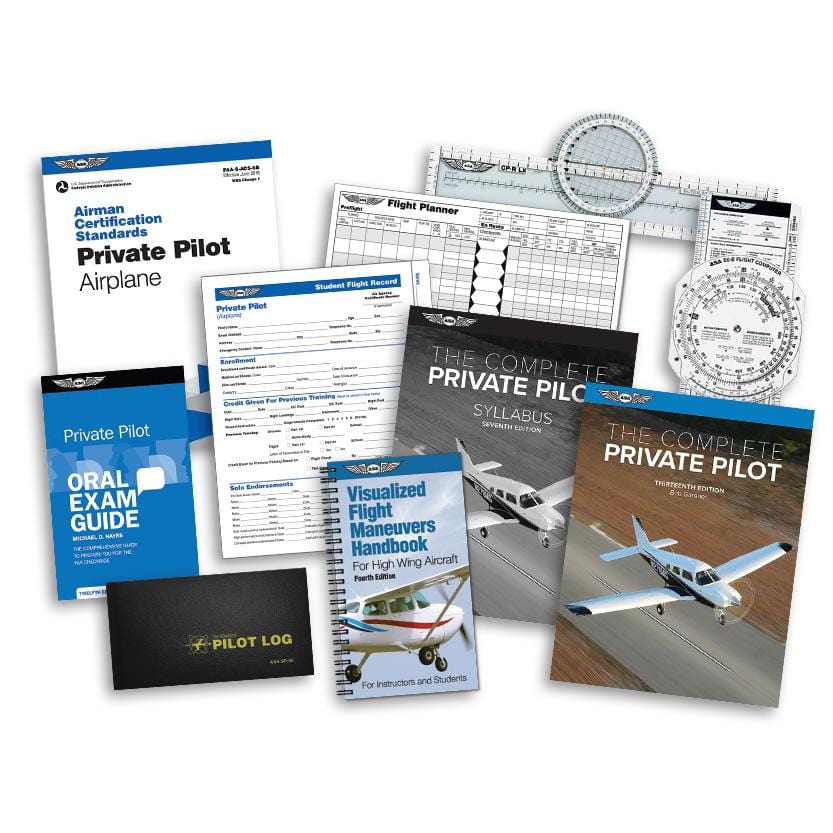When we think of the pilot in command, to us that usually means the person who is actually in the left seat flying the aircraft. This generalization is often true, but the details of who counts as the pilot in command (PIC) and when pilots can log pilot in command time, especially on a multi-pilot crew are not always that straightforward.
Read on to learn more about what it means to be a pilot in command and how pilots can get credit for their PIC hours.
 Definition of Pilot in Command
Definition of Pilot in Command
A common basic definition of a pilot in command is the sole person responsible for manipulating the aircraft controls. This is an important part of the pilot in command role, however there are other aspects to consider as well.
The Federal Aviation Administration (FAA) defines a pilot in command as the person who:
- Has final authority and responsibility for the operation and safety of the flight;
- Has been designated as pilot in command before or during the flight; and
- Holds the appropriate category, class, and type rating, if appropriate, for the conduct of the flight.
 Qualifications for PICs
Qualifications for PICs
The requirements to be a pilot in command vary depending on what Part you are flying under. All licensed Part 91 pilots are qualified to act as the PIC. Under Parts 121 and 135, more strict requirements must be met, and additional training and check rides are required.
For example, to be eligible to fly as pilot in command under Part 135 visual flight rules, pilots must have logged a minimum of 500 hours of flight time including at least 100 hours cross-country of which 25 of those hours must have been at night.
For instrument flight rules Part 135 pilots, those requirements increase to a minimum of 1,200 hours of flight time including 500 cross-country hours, 100 hours at night, and 75 hours of actual or simulated instrument time with at least 50 of those 75 hours having been at night.
Difference Between Logging PIC Time and Acting as the PIC
Although the person acting as pilot in command is often the same person actively flying the aircraft, that is not always the case. The details of when you can log pilot in command time versus when you are acting as the pilot in command are a little more involved.
In certain circumstances, the FAA allows pilots to log pilot in command time even they are not at the controls or when they are not carrying the final authority and responsibility for flight operation and safety. It is important for pilots to understand the types of scenarios in which logging PIC time and acting as the pilot in command do not overlap.
Remember that logging pilot in command time merely means that your actions and current flight role are such that the FAA is allowing you to count the time towards your PIC hours.
Acting as the pilot in command, on the other hand, means that you are the pilot bearing the responsibility, authority, and accountability regardless of whose hands are flying the aircraft.
When Can You Log PIC Time?
Naturally if you are flying solo, you are the sole manipulator of the controls, are responsible for the operation and safety of the flight and hold the correct ratings. In this scenario, you are both eligible to log PIC time and you are acting as the PIC.
On a two-person crew for a civil aviation flight, if a pilot is the sole manipulator of the flight controls and holds the appropriate ratings, that pilot may log the time as PIC time. The pilot may or may not be acting as the PIC, however.
For example, if the first officer is the sole manipulator of the controls for a given time, that time can be logged as PIC. The captain, however, will also log that time as PIC because the final authority and responsibility for the flight remain with the captain.
Can Two Pilots Log PIC Time?
Although the captain is not manipulating the controls, the captain is acting as the PIC. When the pilots trade off again and the captain is flying the aircraft, the first officer will now log no PIC time as he/she is neither the sole manipulator of the controls nor acting as the PIC.
Training flights present another common scenario where a pilot who is not the sole manipulator of the controls may still log PIC time. If the student is piloting the aircraft, the certified flight instructor (CFI) is still acting as the pilot in command since the CFI bears the ultimate authority and responsibility for the operation and safety of the flight.
The FAR 61 on PIC time for Student Pilots
According to FAR 61, the student will not log PIC time even if they are the sole manipulator of the controls. It is not until the student is taking their check ride that they are eligible to log their flight time as PIC. During the check ride, the student pilot, not the examiner, is considered to be the PIC, so this time counts whether the student passes the check ride or not.
Getting ready to become a professional airline pilot? Start your journey by logging time the way the professionals do with a Jeppesen Professional Pilot Logbook. Celebrate your PIC status with a Pilot In Command tee from Aeroplane Apparel Co. available in both men’s and women’s styling.

-
What is the difference between a Captain and a Pilot-in-Command?
The role of the Captain is a rank, the Pilot in Command (PIC) is the pilot who has the flight controls and is logging PIC time. When the First officer has the flight controls he can log that as PIC time, but both Captains and CFIs are a rank that can log PIC during the entire duration of the flight. The Captain is the final authority and it is their role to ensure the operation and safety of the flight.
-
How many hours of pilot-in-command time is needed for a commercial pilot?
To meet the requirements for a CPL (airplanes) you will need a minimum of 100 hours of PIC time.
-
What rank is the pilot in command?
The pilot in command is a position of who is controlling the aircraft at the time (sole-manipulator). For instance, two private pilots flying in an aircraft can switch off PIC time between each other based on who has control of the aircraft. A time where two private pilots can both log PIC time is if one is under a hood to get simulated instrument time and the other is the safety pilot.
Want to learn more about logging flight time?
Check out these guides to help you get on your way to becoming a more proficient pilot!
Did you find this article helpful?
Do you think we missed anything important? Let us know in the comments below!







